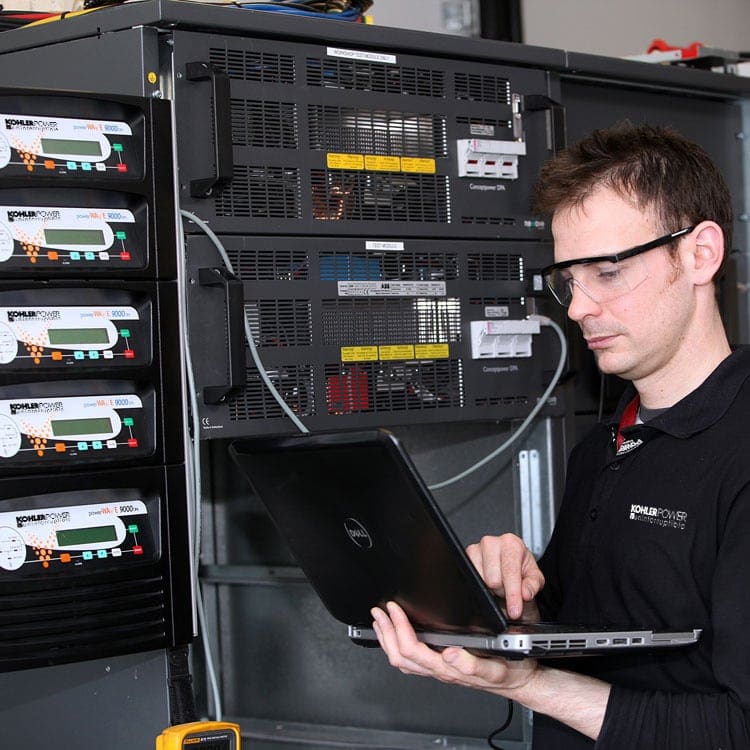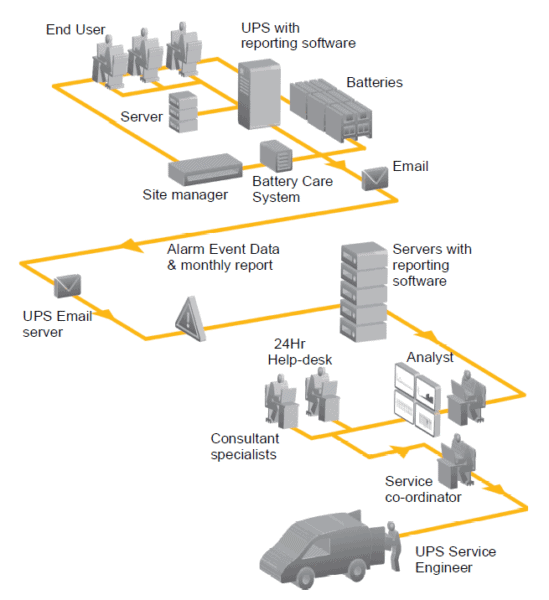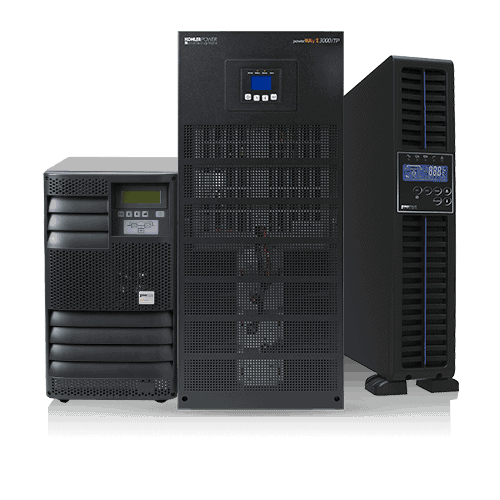In this article Alex Emms, Operations Director at KOHLER Uninterruptible Power, explains why full automation isn’t always the best answer for remote UPS management.
A data centre and the ICT equipment within are often the result of many years’ ad hoc growth and adaptation to changing circumstances. Nevertheless, uninterrupted system availability is often critical to the host enterprise’s business, so clear visibility and control of equipment and environmental status at all times is essential, especially for remote locations.
Fig.1: Servers in a data centre
However, while tools to achieve this may be sophisticated, it’s not always necessary or even desirable to set up an entirely automated closed-loop control environment. In KOHLER Uninterruptible Power’s experience with UPS installations, for example, a degree of manual intervention is often advisable, to ensure operational security.
Variables to be monitored
Management system design depends on the variables to be monitored. Fully-effective management calls for awareness of tactical information such as battery temperature, voltage and resistance values, to allow immediate response and correction of potential or actual fault conditions. Monitoring of environmental, as well as security and access variables, is also important.
More strategic input, related to power consumption, points of power use, and processing load variations should additionally be provided, to facilitate longer term power management and energy efficiency improvement.
The human factor
The Uptime Institute (UI), best-known for its Tier availability classification system, recognises that operational sustainability depends on the data centre’s building as well as its ICT equipment, and defines behaviours and risks that affect data centre uptime.
According to the UI, the three elements of operational sustainability, in order of decreasing impact to operations, are Management & Operations, Building Characteristics, and Site Location. Their Abnormal Incident Reports (AIR) database reveals that leading causes of reported data centre outages are directly attributable to shortfalls in management, staff activities, and operations procedures.
This poses the question; how can you set up a remote management system to eliminate or minimise these human behaviour problems? In KOHLER Uninterruptible Power’s experience, the answer doesn’t necessarily lie in increased automation.
UPS remote management implementations are being accelerated by increasing use of edge micro data centres, often unstaffed, which are geographically distant from an enterprise’s hub. A remote monitoring and control management system, which improves data centre reliability and efficiency, may appear as ideal in such circumstances.
The benefits of one-way communications
However, in KOHLER Uninterruptible Power’s experience, this shouldn’t necessarily include automating the control aspect. Firstly, there can be a mistrust of two-way communications systems, which are seen as a security risk in some organisations. There have been multiple instances of communications equipment manufacturers being blacklisted over concerns about data misuse and associated security risks.
Even without this concern, KUP’s experience has shown that if remote access and control of a UPS is too generally available, damage can occur either by carelessness or malign intent. Better security can be promoted through using one-way communications solutions. The UPSs should remain closely monitored, but the reaction to a fault should be a phone call or email to alert an authorised engineer located near to the UPS. This simplifies the limitation of access to the appropriate personnel.
Nevertheless, once such a warning has been flagged, an appropriate response is essential. Engineers must arrive on site, even if remote, within an agreed timeframe, and equipped with the training, documentation, equipment and parts needed to effect any repairs.
Fig.2 KUP service engineer on site
The importance of a professional callout facility
This is why leading UPS vendors such as KOHLER Uninterruptible Power back up their systems’ functionality, performance and reliability with a callout facility as in Fig. 3’s example, run by well-trained, well-equipped service teams that have the 365/24 geographical coverage essential to the uninterrupted availability of their customers’ entire fleet of UPS systems.
Fig.3: KOHLER Uninterruptible Power’s automatic callout facility








